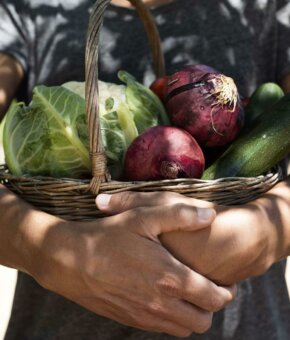
The food we eat can either be the best, safest and most powerful medicine, or the slowest form of poison. Because we are what we eat. Nevertheless, due to all sorts of reasons, a growing group of urban dwellers struggles to provide themselves and their families with fresh and nutritious food. Sustainable urban food production has the potential to turn this around. This is why.
Having access to fresh and nutritious food is not a given for many urban dwellers. Millions of people suffer from lifestyle diseases because they live in Food deserts are regions where people have limited access to healthy and fresh food. This may be due to having a low income or having to travel farther to find healthy food options. More info: https://www.medicalnewstoday.com/articles/what-are-food-deserts#location ; cities where it is almost impossible to find fresh produce. In the United States alone, obesity, high blood pressure and diabetes type 2 are costing over one billion dollars a day and massively detract from people’s quality of life. And as soon as we fall ill, the healthcare system encourages us to reach for pills and medication, rather than prescribing a healthy diet. Of course, our fast-paced lives in which we have no time for cooking combined with the dominant fast-food industry and the fact that fresh food is more expensive than processed meals are not helping either.
Nutrient density
In addition to a lack of fresh produce, the fruits and vegetables we do eat become less nutritious every single day. Because of the way we grow food – in huge monocultures where we use pesticides and artificial fertilizers to grow food as quickly as possible – our crops are getting bigger, but the Nutrient density identifies the amount of beneficial nutrients in a food product in proportion to its energy content, weight or amount of detrimental nutrients. is declining. On top of that, due to all the chemicals, our soil life is dying. And with it all the valuable minerals and nutrients that are essential for crops to absorb. The loss of this healthy habitat full of life pushes farmers into a negative downwards spiral, forcing them to use more chemicals each growing season.
Sustainable urban food production
By bringing food production back to the city in an ecologically sound way, we can solve many of these problems at once. When strategically positioned, rooftop farms, vertical farms and urban food forests in and around cities can put a stop to food deserts. Urban farms can create sustainable jobs for community members, including many of the so-called ‘forgotten workforces‘. And last but not least, by producing food in a sustainable way and prioritizing soil health and biodiversity like this climate positive urban farm does, we can make sure that food does not just look healthy, but that it actually is.
Next to improving people’s physical health, sustainable urban food production also has many mental upsides. Recent studies confirm there is a strong correlation between people’s wellbeing and urban green spaces. Residents claim to be happier when their neighborhoods are greener. And what better way to greenify your city than by turning it into one big edible oasis?
Keen to know more about how we can turn cities into healthy edible oases? Sign up for our newsletter or watch our online documentary!
Originally published on April 26th, 2021. Latest update: July 25th, 2022



